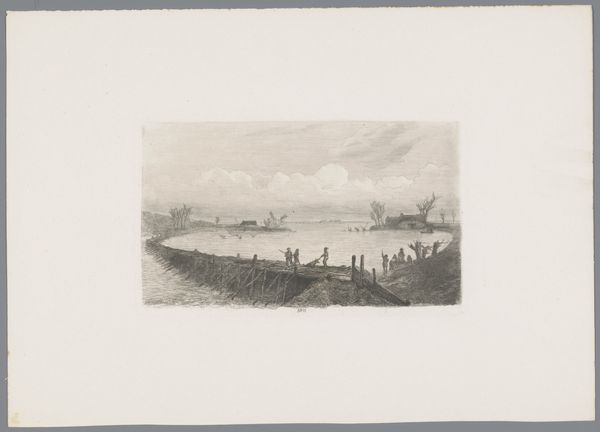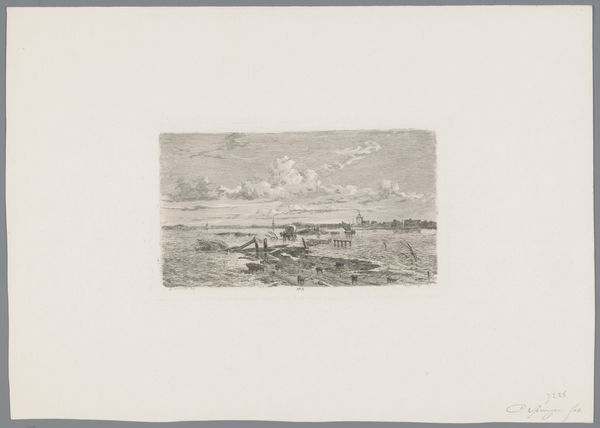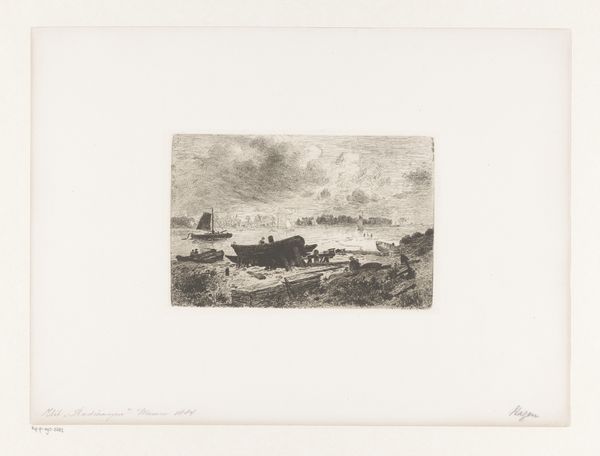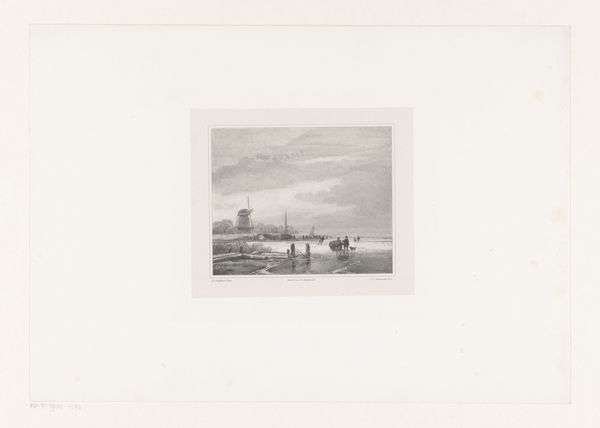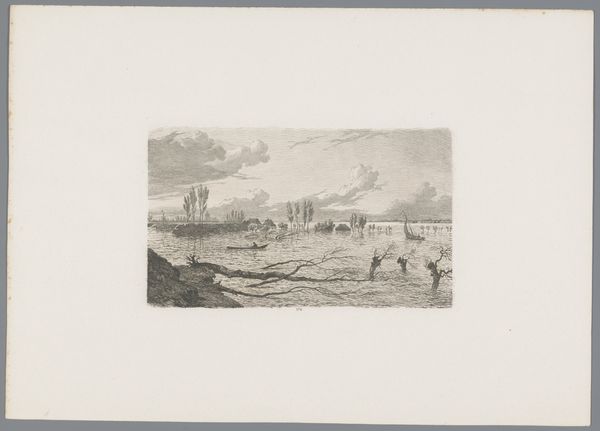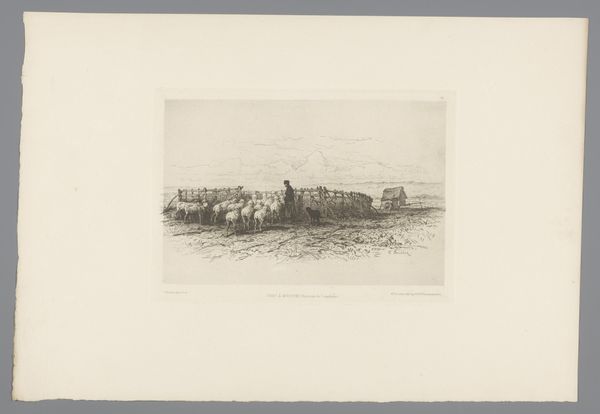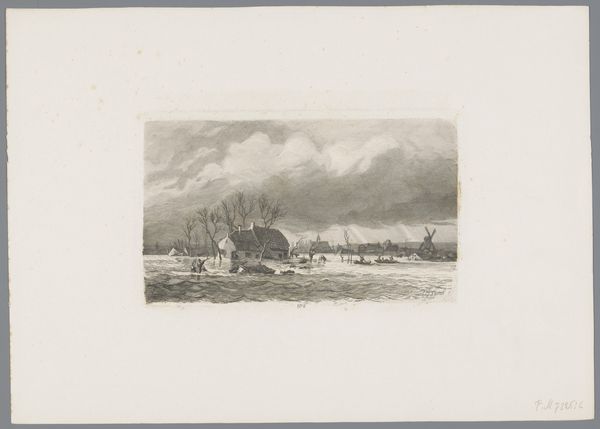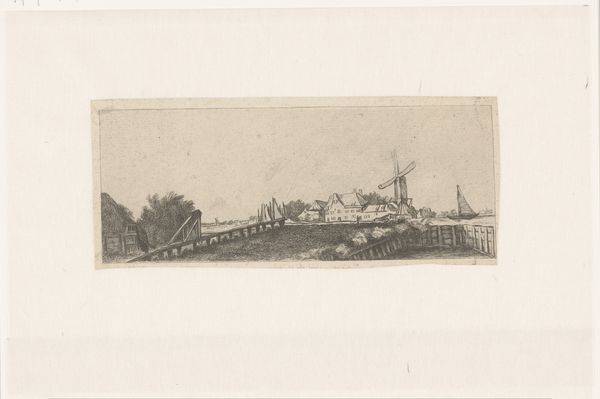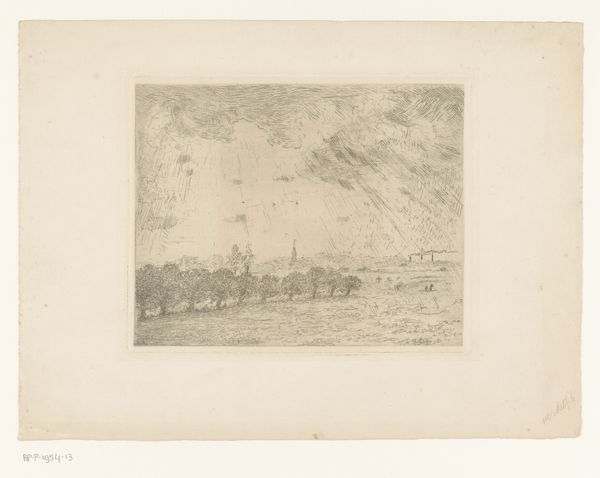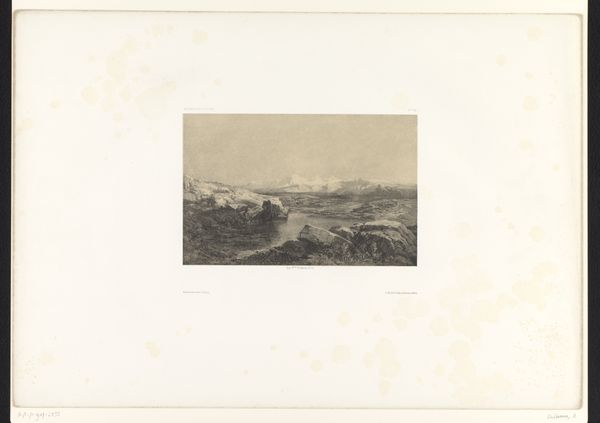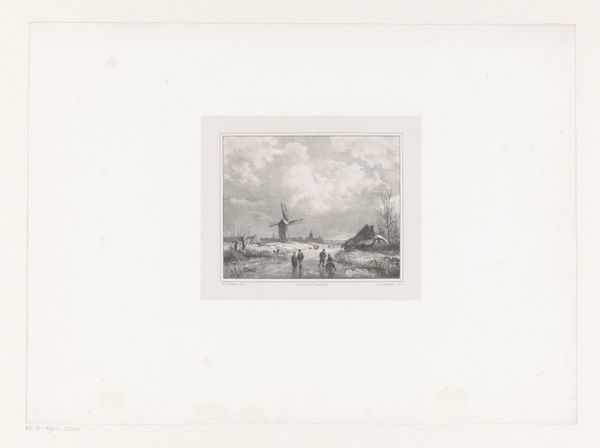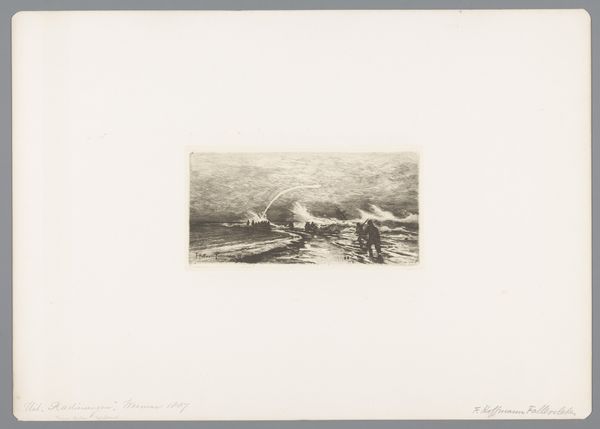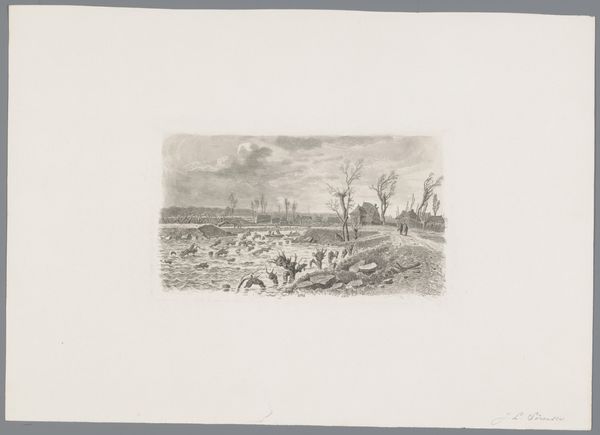
print, engraving
# print
#
landscape
#
engraving
#
realism
Dimensions: height 300 mm, width 422 mm
Copyright: Rijks Museum: Open Domain
Editor: So this is "Dijkdoorbraak bij Dreumel, 1855", by Willem Gruyter jr., made using an engraving. The landscape feels both dramatic and desolate – all that water, that one little house seemingly stranded. What strikes you most about it? Curator: Ah, yes, a landscape consumed by an epic fail, nature turning on its own human constructs! It’s all in shades of grey but whispers stories of fear and resilience. Look closely at the turbulent water; Gruyter captures its raw power with simple lines. There's a certain beauty amidst the destruction, a poignant dance of light and shadow, don’t you think? But what about that single house? Editor: It looks so vulnerable! Like a toy house abandoned in a bathtub. I hadn’t considered the light before, though; the bright clouds sort of soften the scene. Is that supposed to provide comfort in a way? Curator: Comfort? Perhaps a flicker of hope? It may symbolize something stronger; it has to carry on for the inhabitants. It shows you nature’s might, which can be terrifying, can make our lives almost pointless, and in art there's a certain comfort. It helps to digest something traumatic. Did it change how you perceive it at all? Editor: Definitely. The drama is still there, but there's this subtle defiance too. Like, “we’re still here despite the flood.” The idea of wrestling and working through things gives some peace of mind. Curator: Indeed, the print now sings not only of loss, but the spirit to pick up the pieces, find something good still. It reminds us we're a part of nature after all, fragile but ever resourceful! Editor: Thanks, I didn't think it would come out in just that black and white depiction. So simple!
Comments
No comments
Be the first to comment and join the conversation on the ultimate creative platform.
